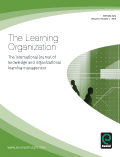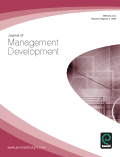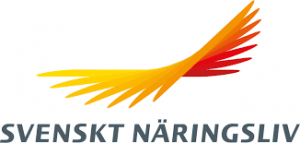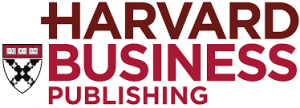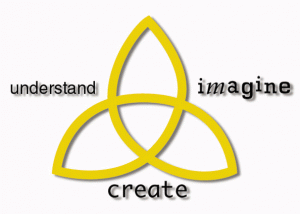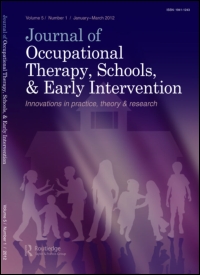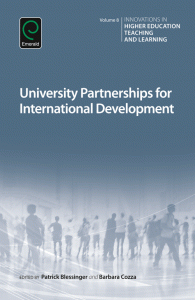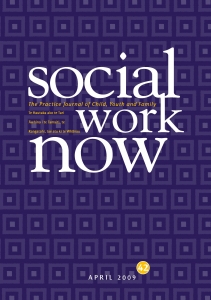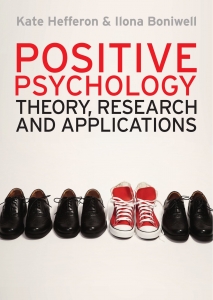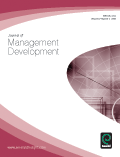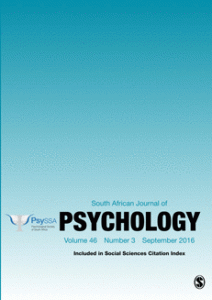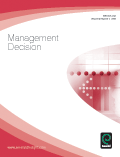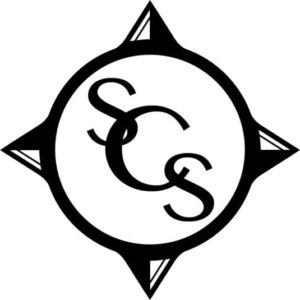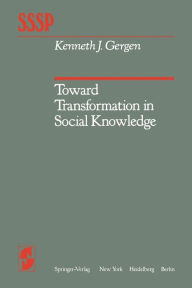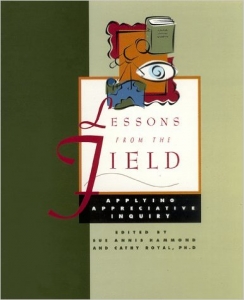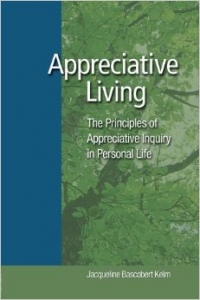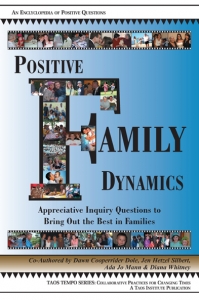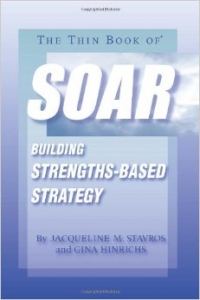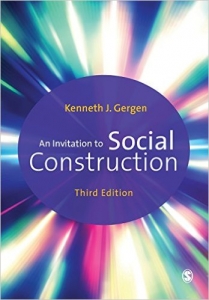In this article, you will find a description of a procedure for Appreciative Peer Review.
This method is a combination of:
- Kurt Lewin’s Action Research Model;
- Peer consultation as developed by Caplan and translated into Dutch by Jannie de Weerd;
- Appreciative Inquiry (David Cooperrider, Jane Magruder Watkins).
Duration: 1.5 hours
Useful: having one of the facilitators take notes during the session, write down the steps in the process.
Below you will find information on all steps in the process:
- Discovering;
- Sharing;
- Dreaming;
- Designing;
- Delivering;
- Evaluating.
Discovering

The goal of Discovering is: agreeing on the “affirmative theme” (the question we work with) and the input of everyone in the group. The key is that the subject retains ownership of the issue, and is responsible for the follow-up. The affirmative theme is the original question, rephrased in a positive way.
Questions that may help in this phase are:
- Imagine we are at the end of this session and it has been extremely successful. What has happened? What would make you feel content?
- What can I or what can we do for you in the next hour and a half?
An example
A manager feels her team lacks motivation. Occasionally, they simply don’t seem to care. A facilitator has asked her: “Could you tell me a story about a situation in which your team performed exactly as you envisioned?”
She answers that this had actually happened just the week before: a problem that urgent attention and everyone came together to fix it. She ordered pizzas, and everyone worked late so the customers would not be affected for longer than absolutely necessary. This is something she would love to happen more often: for her team to really be there for the customers. And she would like for the peer-review group to give her some tools and ideas on how to achieve this.
Reflection
The manager’s “problem” – lack of motivation – has been changed into the opportunity to serve her customers with her team. Her question to the group is clear: provide me with the tools to achieve this.
Sharing stories

The goal of Sharing stories is to: formulate the “positive core”, the factors that have in the past contributed to the successful realisation of at least part of the affirmative theme.
Questions that may help in this phase, are:
- Can you share a story about a situation in which you had a good experience with … (the affirmative theme)?
- What happened, exactly?
- Who was involved?
- How did you contribute?
- What was the effect of your contribution?
- Which of your qualities and skills did you use?
- Which conditions played a vital role?
- Listening to your own story, what can you conclude?
- Are you perhaps already starting to formulate an answer to the question we started this session with?
The contribution of the other participants in this phase is to provide explicit feedback on what they hear: the qualities and skills involved, and the relevant factors and conditions. It helps to write these down to hand them to the subject later on.
An example, continued
The manager we met before most definitely has a story about customer satisfaction. She might say: “Last week we had a situation that caused problems for a large number of customers. We had to act fast. My whole team went above and beyond the call of duty. We took hardly any breaks and worked together till eight at night to solve the issue. We ordered pizzas and I was able to assist a few customers myself. Other than that, I didn’t need to do that much. I just walked around the department and thanked my team for their efforts. I did notice Frank excelled, which I hadn’t expected because he can be a bit of a slacker. I complimented him on his work and he looked very pleased. Yes, that was a wonderful day indeed.”
A facilitator can capture a list of the “positive core” of this story. For example:
- There was an emergency.
- All team members put in a lot of effort.
- The manager ordered in pizza.
- She assisted the team in their work.
- She walked around and thanked the team.
- She complimented a team member who did unexpectedly well.
Reflection
If we ask the subject for a concrete example, a lot of information comes to the fore, especially when we ask her direct questions to bring her back into that situation. She might not even be aware of all of the factors that contributed to this success story. Often people will say: “Well, of course – that is part of my job.”
Something else happens when people share their story. We as a group get involved in the story, and we feel a connection to the person sharing, making for a more involved group process.
Dreaming

We explicitly ask for images to invite the subject to paint their perfect picture. This is a creative and non-linear process, requiring our mind to operate in a different manner than when we are writing a memo, for example, when we are using the analytical part of our brain.
The goal of Dreaming is: to create an image of the desired future that is so attractive that actions become a matter of course.
Questions that may help in this phase, are:
- If all the factors for success that you just listed were completely realised by … (relevant date in the near future), what would that look like?
- How did you get there? What were your contributions?
- What metaphor for that situation comes to mind?
- If you could make a movie of that situation, what would it be called?
- What role would you play in this movie?
- If a newspaper would interview you this time next year, what is the story you would want to tell?
- How would you summarise your success in one sentence for the interviewer?
- In this phase, the peer-review group asks the subject for concrete images, not for a plan of action.
An example, continued
Reiterating for the manager the qualities, skills, factors and conditions that led to success, will probably reinforce the feeling that the team is doing pretty well, at least at crucial moments. But of course it would be even better if the team performed like that in other situations as well.
This is the time for us to ask her how she envisions this: “Imagine, in three months, everything we have just listed has been realised and your team is performing as you want, what will that look like? What picture comes to mind?”
After some consideration she answers: “A great metaphor for me, is that we are a rowing team doing our best to all go in the same direction, in order to help our customers. At the moment, we each tend to do our own thing, leaving us without direction.”
“So, would you be the cox?”
“Yes, that’s how I see myself. And I feel that’s how the team would like me to act too; to give them direction.”
“And will you be a rowing team battling for first place?”
“No, that’s not very important to me. In fact, I don’t care if all other teams beat us, but I do care we get the best out of ourselves. Because that is what I saw last week: if we are our best selves, our customers are happy.”
Reflection
Often it can take a while for a subject to come up with an image or metaphor that inspires them and applies to their situation. It is important we ask for our subject’s contribution, or possible contribution, to the success story.
As the desired future image takes shape, the next step to reach the ideal situation also comes into focus. If needed, there can be an intermediate step, for example, asking the subject for a mission statement. In the above example this could be something like: “A rowing team that has a clear course, in which each team member participates to their best abilities.”
Designing

The goal of the Designing phase is: to create an overview of which people to approach and what means to use to engage them to achieve the ideal situation.
Questions that may help in this phase, are:
- Who could help you realise the ideal situation?
- And who else?
- Who haven’t you considered yet?
- How will you approach these people?
- Which other communication tools could you use?
- What can others do for you?
- Which books, articles, films, and so on could help you with that?
In this phase the peer-review group is encouraged to think along, out loud. Any tips or pointers are welcome. They might know people who could help, know of a useful book, be able to advise on means of communication that have worked for them, and so on.
An example, continued
How can the manager increase the odds of her team becoming that rowing team in which everyone aims to get the best out of themselves? In the Design phase we are not yet looking to create a plan of action, but rather to increase the chance of success by providing the subject with insights and perspectives from which to choose.
In this situation, these could be things like:
- Peter Block has written an interesting book, Empowerment in Organisations, which could give our manager new insights.
- There are inspiring videos available on YouTube.
- She might know a fellow manager who is well-liked by her team, who can think along with her.
- She could reach out to someone in higher management, for instance if she needs funds for a team-building activity.
- If someone in her team under-performs, she could get them a coach.
- She herself might benefit from some coaching sessions.
- One of the peer-review group members could meet her for coffee to think along with her.
Reflection
In this phase a sort of brainstorm takes place, during which the entire group can make suggestions to further aid the subject. Of course, the subject retains responsibility for the next step: they are best suited to determine what they have already tried and what could work. It might be frustrating to the group members to not have their advice followed, but again, the subject determines what is valuable in this specific situation.
Delivering

The role of the peer-review group in this phase is to help the subject make this next step as small and concrete as possible. They could repeat the question: “What is your first small step?” a few times to make the action more concrete.
A first small step may appear tiny
The importance of the first step is to get moving, no matter how small that movement may be. The first step is not taken during the group session but afterwards. The idea behind this is that the moment the action is taken there is the opportunity to give meaning to it: “I know what I think when I see what I do.” (Karl Weick). The realisation phase combined with the evaluation phase leads to answering the original question.
The goal of the Delivering phase is: to get a clear picture of the first action that will help answer or nuance the original question, and to instil confidence and determination in our subject.
Questions that may help in this phase, are:
- What is your first step? (Ask four times if necessary!)
- Who can help you take this first step?
- What will people say to you after you’ve taken this step?
- On a scale of one to ten, how much confidence do you have that this will work? And why? How could you raise that number? And how can I help you with that? Or can someone else?
An example, continued
Our manager has collected a number of ideas and suggestions during the previous phase, both her own and those from members of the group. She can now choose the idea that appeals to her the most, at least in the short term.
She might say: “Now that I think about it, I was recently at a conference where I met a colleague from another organisation who was experiencing the same issues with her team. I think I might contact her, I must have her business card lying around somewhere…”
“So what could be your first small step?”
“I could contact her.”
“So what will be your first small step?”
“Call her? But I’d have to find her card first! It might be in my bag, hang on … Ah, here it is. You know what, I’ll call her tomorrow to set up a meeting. I hope that eases your minds!”
Reflection
Getting someone to undertake action during the group session is a nice bonus. It means we can ask her immediately whether she has placed the call and what could be her next small step. It can feel forced to keep asking the question “What is your first small step?”, but it helps the subject to become specific and take responsibility for the follow-up.
Evaluating

Evaluating is not only important to get an idea of what we have accomplished and how we got there, it also re-emphasises the first step. Moreover, we may find that during the session another issue has arisen that is worth looking into, so that evaluation leads to reconnaissance again.
The goal of this last step is to: find out in how far this process has helped the subject answer the unsolved current work-related issue that started this peer-review group meeting. Additionally, it serves to determine the outcome of the result(s) and examine whether the original question has really been answered or whether it has shifted, been nuanced or become irrelevant.
Questions that may help in this phase:
- What did you get out of this meeting?
- What is the most important thing you learnt today?
- Has another question arisen during our session?
- What has helped you?
- What else could we have added, did you miss anything?
- What could we have done differently?
An example, conclusion
Our manager started out by saying that she felt her team lacked motivation. During the reconnaissance phase, a new question emerged, but we could still ask her whether she feels her team is more motivated now.
She might say: “Oh right, that’s something I did raise a while back. But it has become irrelevant now. The discussion we ended up having was much more valuable than a discussion about my team’s motivational issues.”
“What do you mean?”
“Well, by looking to my team for the problem and its solution, I took away my responsibility to act. Now, I am the one undertaking action and that really is a lot fairer.”
“And how did that happen during our peer-review group meeting?”
“Firstly, by rephrasing what the problem actually was. But also by focusing on how I could use my skills and qualities, and by creating an ideal image and making that concrete. This led me to take responsibility for my team, and that has led to a better way of influencing them. And a greater mutual appreciation! So thank you all very much!”
Reflection
During a peer-review session, the subject’s question often moves. While talking, people discover what is actually troubling them. In fact, by simply talking about their issue and stating their question out loud, it often disappears on its own accord. During this last phase, the subject marks this process for themselves and the group.
This article has been published in the November 2017 issue of AI Practitioner. You can download the full issue ‘What Really Matters: Celebrating Wick van der Vaart’ the author of this peer review for € 19,95.
You can read the original version of this article in Dutch on the website of Instituut voor Interventiekunde.




